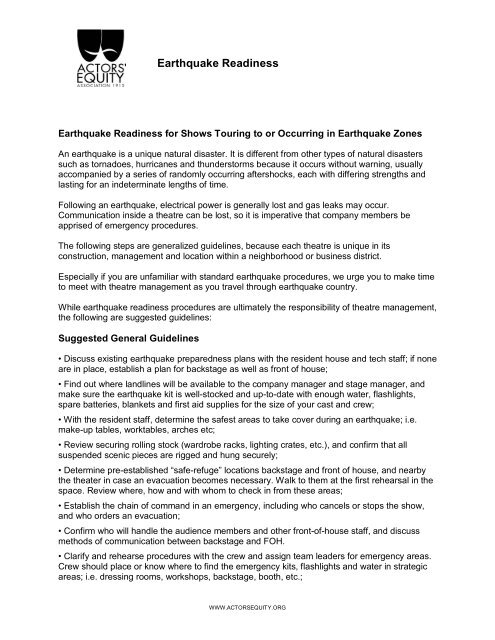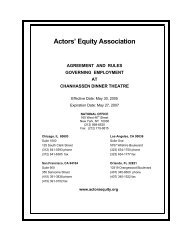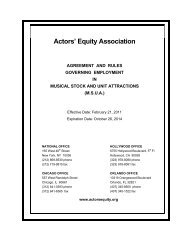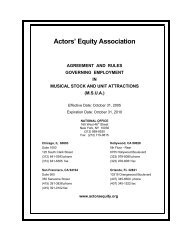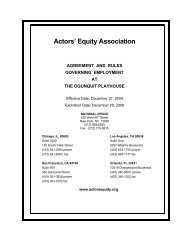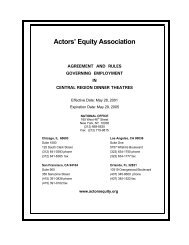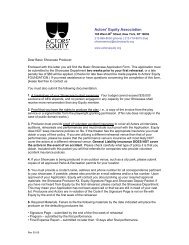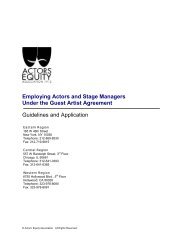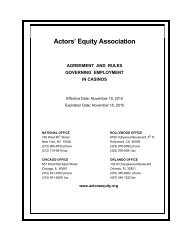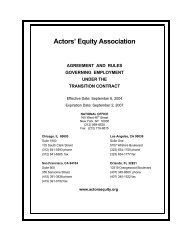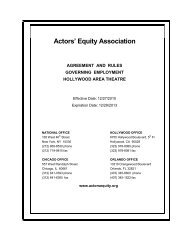AEA Stage Manager Packet - Actors
AEA Stage Manager Packet - Actors
AEA Stage Manager Packet - Actors
- No tags were found...
Create successful ePaper yourself
Turn your PDF publications into a flip-book with our unique Google optimized e-Paper software.
Earthquake ReadinessEarthquake Readiness for Shows Touring to or Occurring in Earthquake ZonesAn earthquake is a unique natural disaster. It is different from other types of natural disasterssuch as tornadoes, hurricanes and thunderstorms because it occurs without warning, usuallyaccompanied by a series of randomly occurring aftershocks, each with differing strengths andlasting for an indeterminate lengths of time.Following an earthquake, electrical power is generally lost and gas leaks may occur.Communication inside a theatre can be lost, so it is imperative that company members beapprised of emergency procedures.The following steps are generalized guidelines, because each theatre is unique in itsconstruction, management and location within a neighborhood or business district.Especially if you are unfamiliar with standard earthquake procedures, we urge you to make timeto meet with theatre management as you travel through earthquake country.While earthquake readiness procedures are ultimately the responsibility of theatre management,the following are suggested guidelines:Suggested General Guidelines• Discuss existing earthquake preparedness plans with the resident house and tech staff; if noneare in place, establish a plan for backstage as well as front of house;• Find out where landlines will be available to the company manager and stage manager, andmake sure the earthquake kit is well-stocked and up-to-date with enough water, flashlights,spare batteries, blankets and first aid supplies for the size of your cast and crew;• With the resident staff, determine the safest areas to take cover during an earthquake; i.e.make-up tables, worktables, arches etc;• Review securing rolling stock (wardrobe racks, lighting crates, etc.), and confirm that allsuspended scenic pieces are rigged and hung securely;• Determine pre-established “safe-refuge” locations backstage and front of house, and nearbythe theater in case an evacuation becomes necessary. Walk to them at the first rehearsal in thespace. Review where, how and with whom to check in from these areas;• Establish the chain of command in an emergency, including who cancels or stops the show,and who orders an evacuation;• Confirm who will handle the audience members and other front-of-house staff, and discussmethods of communication between backstage and FOH.• Clarify and rehearse procedures with the crew and assign team leaders for emergency areas.Crew should place or know where to find the emergency kits, flashlights and water in strategicareas; i.e. dressing rooms, workshops, backstage, booth, etc.;WWW.ACTORSEQUITY.ORG


